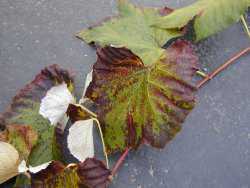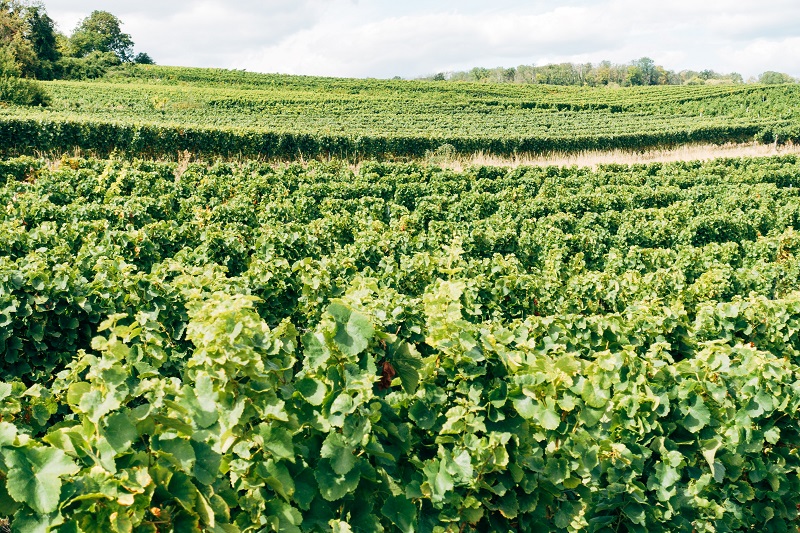A Primer In Potassium Use

Soon after I started my Extension career, I was speaking with one of my colleagues about nutrient management in vineyards, and he said, “Many growers worry too much about nitrogen, and not enough about potassium.” This wasn’t to say that growers didn’t think about potassium at all, but that they needed to focus less on vines’ nitrogen needs and more on how important potassium is in developing a healthy crop.
What Does It Do?
Potassium (K) is involved in many functions of the plant, but one of its most important ones is to help compounds and ions move across cell membranes. For example, it is used to help move sugars produced in the leaves into the phloem, and from the phloem into the berries. And, vines that are deficient in potassium may also be more susceptible to winter injury.
How Much Do I Need?
By harvest, more than half of the vine’s total potassium is located just in the fruit. For every ton of grapes harvested from one acre, about five pounds of potassium is removed. The breakdown of organic matter like cover crops, hay, or chopped prunings often does not add enough potassium back to the soil to make up for what has been removed. This means that growers need to, at least occasionally, add some kind of material to replace the potassium that is removed at harvest. The amount that should be added can only be determined by taking soil samples and petiole samples.
While samples can be taken at bloom or after veraison, it is recommended that petiole samples be taken later in the season to get the best handle on potassium status in the vine. Most viticulturists look for petiole samples to have somewhere around 1.5% to 2.0% potassium at that point in the season. Target values for potassium in the soil are about 75 to 100 parts per million (or 150 to 200 pounds per acre).
Deficiency symptoms for potassium generally show up in the latter portion of the season, and will first appear on basal leaves as yellowing or dead tissue between veins on the leaves, and along the leaf margins. Symptoms appear on the oldest leaves first and usually not on those near the shoot tip.
How Do I Add It?
If visual symptoms and tissue tests indicate a deficiency of potassium, growers can apply potash (potassium chloride) or other potassium fertilizers.
Other materials like potassium sulfate (50% K2O) and Sul-Po-Mag (22% sulfur, 22% potassium, and 11% magnesium) can also be used depending on vineyard conditions and the need for other nutrients. These materials should be applied in a band directly under the trellis to help make sure that most of it will be available in the root zone. Applications can be made anytime, but are best targeted either in the fall after harvest, or in the spring prior to budbreak.
Growers who want to use organic sources should consider using pomace from wineries after pressing is finished, as skins and stems retain some of the potassium from the vines. Have a sample of any organic material that will be used analyzed by a lab to determine its nutrient content before applying it in the vineyard.









